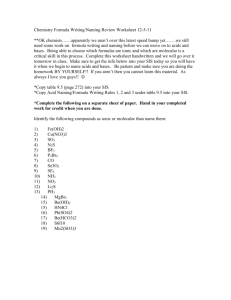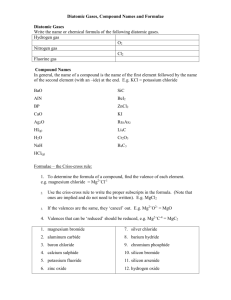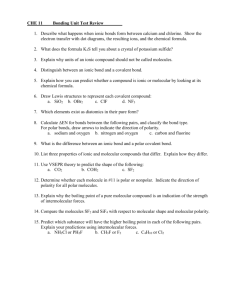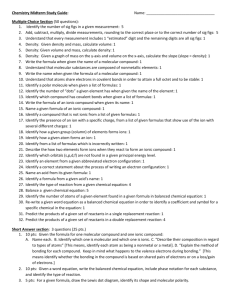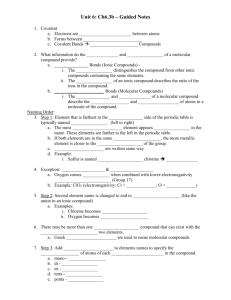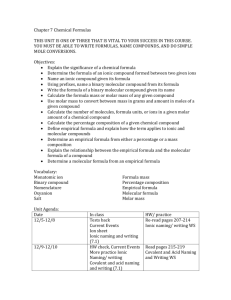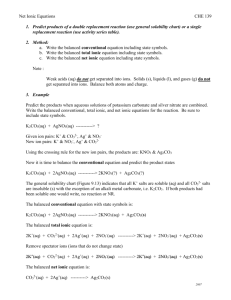QUIZ 2 OCT15_2009_answers
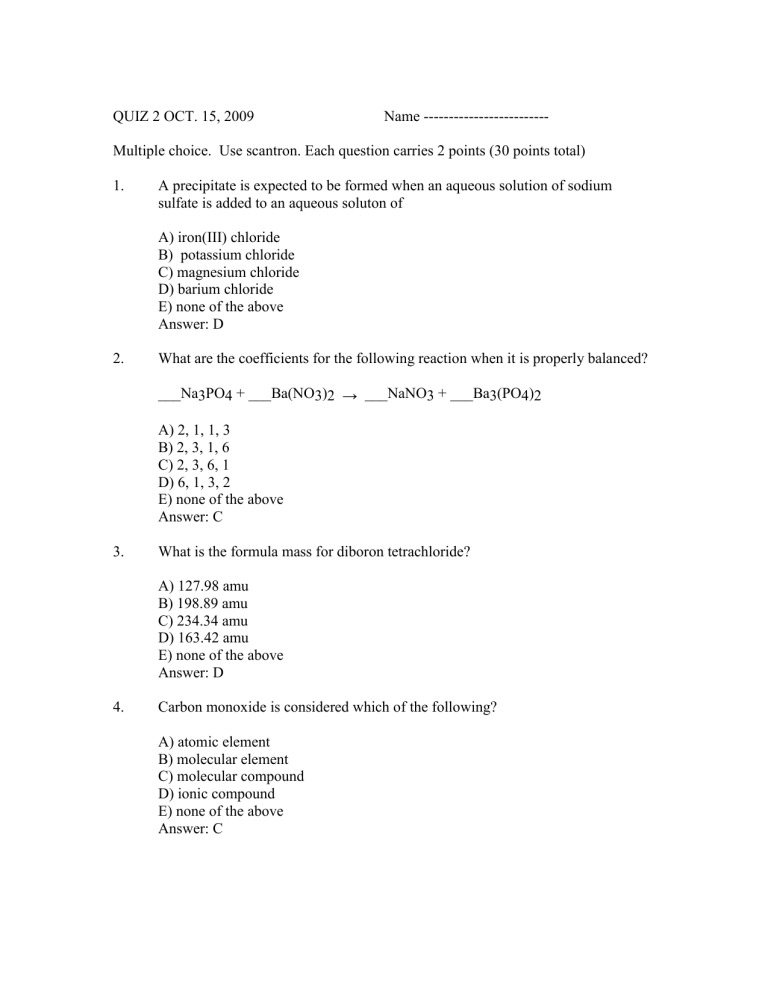
QUIZ 2 OCT. 15, 2009 Name -------------------------
Multiple choice. Use scantron. Each question carries 2 points (30 points total)
1. A precipitate is expected to be formed when an aqueous solution of sodium sulfate is added to an aqueous soluton of
A) iron(III) chloride
B) potassium chloride
C) magnesium chloride
D) barium chloride
E) none of the above
Answer: D
2. What are the coefficients for the following reaction when it is properly balanced?
___Na3PO4 + ___Ba(NO3)2 → ___NaNO3 + ___Ba3(PO4)2
A) 2, 1, 1, 3
B) 2, 3, 1, 6
C) 2, 3, 6, 1
D) 6, 1, 3, 2
E) none of the above
Answer: C
3. What is the formula mass for diboron tetrachloride?
A) 127.98 amu
B) 198.89 amu
C) 234.34 amu
D) 163.42 amu
E) none of the above
Answer: D
4. Carbon monoxide is considered which of the following?
A) atomic element
B) molecular element
C) molecular compound
D) ionic compound
E) none of the above
Answer: C
5.
6.
7.
8.
9.
An aqueous solution is:
A) any liquid with another compound dissolved in it.
B) an ionic compound with water dissolved in it.
C) water with a molecular compound dissolved in it.
D) water with another compound dissolved in it.
E) none of the above
Answer: D
How many of each type of atoms are there in the formula Ca3(PO4)2?
A) Ca = 3, P = 1, O = 4
B) Ca = 3, P = 2, O = 4
C) Ca = 3, P = 2, O = 8
D) Ca = 3, P = 1, O = 8
E) none of the above
Answer: C
What is the formula for an ionic compound made of carbon and oxygen?
A) CO2
B) C2O
C) CO
D) CO3
E) Carbon and oxygen do not form an ionic compound.
Answer: E
The oxygen-to-hydrogen mass ratio of water is always 8.0 is an example of what fundamental law?
A) Law of Constant Composition
B) Law of Constant Mass Ratio
C) Law of Conservation of Mass
D) Law of Constant Whole Number Ratio
E) none of the above
Answer: A
What would the formula of diiodine pentasulfide be?
A) I5S2
B) I2S5
C) I4S9
D) I2S7
E) none of the above
Answer: B
10. What is the molecular equation for the reaction of hydrochloric acid with potassium hydroxide?
A) H2Cl + 2KOH → H2O +2KCl
B) 2HCl + K(OH)2 → 2H2O + KCl2
C) H+ + OH- → H2O
D) HCl + KOH → H2O + KCl
E) none of the above
Answer: D
11. Considering the following precipitation reaction:
Pb(NO3)2(aq) + 2KI(aq) → PbI2(s) + 2KNO3(aq)
Which ion would not be present in the complete ionic equation?
A) Pb2+
B) K+
C) NO3-
D) I-
E) All the above ions are in the complete ionic equation.
Answer: E
12. Which of the following compounds is SOLUBLE?
A) aluminum hydroxide
B) aluminum sulfide
C) aluminum carbonate
D) aluminum sulfate
E) none of the above
Answer: D
13. When a solution of MgCl2 and one of AgNO3 are mixed, the net ionic equation is
A) Mg2+(aq) + 2Cl-(aq) + 2Ag+(aq) + 2NO3- (aq) → Mg2+(aq) + 2NO3- + 2AgCl(s)
B) Mg2+(aq) + 2Cl-(aq) + 2Ag+(aq) + 2NO3- (aq) → Mg(NO3)2 (aq) + 2 AgCl(s)
C) Mg2+(aq) + 2NO3-(aq) → Mg(NO3)2(aq)
D) Cl-(aq) + Ag+(aq) → AgCl(s)
E) none of the above
Answer: D
14. Which of the following species is a molecular element?
A) neon
B) sulfur
C) chlorine
D) carbon dioxide
E) none of the above
Answer: C
15. Identify the single displacement reactions among the following:
1. Zn(s) + Cu2+(aq) → Zn2+(aq) + Cu(s)
2.
2 Na(s) + 2HCl(aq) → 2NaCl(aq) + H2(g)
3. Mg(s) + Zn2+(aq) → Mg2+(aq) + Zn(s)
A) 1 and 2 only
B) 1 and 3 only
C) 2 and 3 only
D) All of 1, 2, and 3
E) None of 1, 2, and 3
Answer: D
